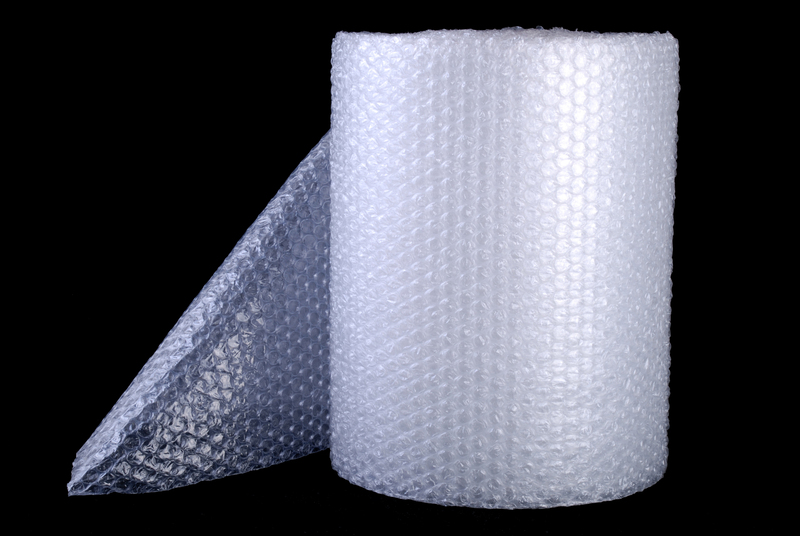Avoiding Common Mistakes When Lifting Objects Solo
Lifting objects by yourself is a common activity in daily life, whether at home, work, or the gym. However, doing it incorrectly can result in unnecessary injuries and long-term health problems. To prevent these issues, it's crucial to understand the correct lifting techniques and steer clear of the most frequent mistakes. In this comprehensive guide, we'll explore how to avoid mistakes when lifting objects alone and ensure both your safety and efficiency.
Why Safe Lifting Matters
Every year, thousands of people suffer from back injuries or muscle strains due to improper lifting techniques. According to the Bureau of Labor Statistics, over one-third of work-related injuries involve musculoskeletal disorders from manual lifting. Solo lifting increases your risk as there's no immediate help to correct your posture or assist if something goes wrong. By learning to avoid common lifting mistakes, you protect your health, save on medical expenses, and boost your physical capabilities.

Understanding the Risks of Solo Lifting
When you lift objects by yourself, especially if they are heavy or awkwardly shaped, you expose your body to several potential hazards. Some of these risks include:
- Lower back injuries: Often caused by improper bending or twisting motions.
- Muscle strains and sprains: Due to lifting beyond your capacity or using poor technique.
- Slips and falls: Especially if your path is blocked or the lifted item obstructs your view.
- Crushed fingers or toes: Dropping items or failing to grip them securely.
Recognizing these risks is the first step towards safe solo lifting.
Top Mistakes to Avoid When Lifting Heavy Objects Alone
1. Lifting with Your Back Instead of Your Legs
A major mistake people make while lifting objects solo is bending at the waist rather than squatting down. This puts enormous pressure on your lower back.
- Correct technique: Always bend your knees, keep your back straight, and use the strength of your legs to lift the object.
2. Attempting to Lift Objects That Are Too Heavy
Overestimating your physical capabilities is a frequent error. Trying to lift an object that's too heavy can lead to severe injury.
- Tip: Test the weight before lifting. If it's too heavy, seek help or use proper equipment.
3. Ignoring Your Environment
Failing to clear the area of tripping hazards or not planning your route may result in accidents.
- Tip: Always check that your path is clear and the destination is ready to receive the object.
4. Poor Grip and Awkward Item Positioning
You need a firm and balanced grip on the item. Lifting an awkwardly shaped or slippery object increases the risk of dropping it, which can cause injury.
- Suggestion: Use gloves or grip aids if necessary. If the object is unbalanced, reposition or adjust your hold before lifting.
5. Twisting Your Body While Lifting
Twisting motions under load can strain your back muscles and spinal discs.
- Advice: Keep your torso straight and turn by moving your feet, not your waist, when changing direction.
6. Rushing the Process
Hurrying increases the likelihood of making mistakes. Lifting too quickly prevents you from checking your form and surroundings.
- Reminder: Take your time--slow, steady movements minimize injury risk.
7. Not Using Equipment Designed to Help
Manual lifting aids like dollies, hand trucks, or lifting straps exist for a reason. Not using them can tire your body unnecessarily and lead to injury.
- Tip: Assess if using mechanical or supportive equipment is safer for the task at hand.
Essential Tips for Lifting Objects Safely When Alone
Plan the Lift
Before you even touch the object, assess what you're about to do. Consider the following:
- Weight: Is it manageable on your own?
- Obstacles: Are there any items or hazards in your path?
- Destination: Clear space where you'll set the object down.
Warm Up and Stretch
Lifting heavy or even moderately weighted objects can shock unprepared muscles. Simple stretching and light movement to warm up your body can prevent strains and pulls.
Get a Good Grip
Always grip items securely before attempting to lift. Place hands on opposite corners when possible for better balance.
Maintain Proper Posture
- Keep feet shoulder-width apart for balance.
- Bend at your knees rather than your waist.
- Keep your back straight throughout the lift.
- Hold the object close to your body to reduce strain.
Lift Smoothly and Slowly
Lift by straightening your legs in a controlled, steady motion. Avoid jerky or fast movements.
Know Your Limits
If a load is too bulky or heavy, don't hesitate to seek help or break the load into smaller pieces if possible.
Commonly Asked Questions About Lifting Heavy Objects Solo
Is it safe for anyone to lift heavy objects alone?
Not everyone should attempt solo lifting. People with previous back injuries, joint issues, or certain medical conditions should avoid solo lifting of heavy items. Always evaluate your personal health before attempting any lift.
What's the best way to lift awkward objects by yourself?
If possible, disassemble or repack the object to make it more manageable. Otherwise, use lifting straps or aids to help support the weight, and ensure you have the best grip possible.
Should I wear certain clothing or shoes when lifting alone?
Wear comfortable, non-restrictive clothing and closed-toed, non-slip shoes. This helps you maintain balance and avoid slipping.
Tools and Equipment to Help You Lift Objects Alone
When lifting heavy or awkward objects by yourself, the use of lifting aids can be invaluable. Here are some recommended tools:
- Dolly or Hand Truck: Ideal for boxes and appliances--reduces direct strain on your body.
- Furniture Sliders: Helps move bulky items across floors with minimal effort.
- Lifting Straps: Distributes weight evenly and allows you to use your stronger muscle groups.
- Work Gloves: Enhances grip and protects hands from friction or sharp edges.
Long-Term Strategies for Injury Prevention
Even after learning proper solo lifting techniques, you should focus on injury prevention as a lifelong goal.
- Regular Exercise: Strengthen your core, back, and legs to support safe lifting.
- Proper Nutrition: Maintain healthy muscles and joints through balanced nutrition.
- Rest and Recovery: Permit your body time to recover after strenuous lifting tasks.
- Education: Stay informed on the latest safety practices for manual handling.

Summary: Best Practices for Lifting Heavy Objects by Yourself
To avoid mistakes when lifting objects solo, always:
- Assess the weight and plan your lift in advance.
- Clear your path and destination of all obstacles.
- Use correct lifting posture--bend your knees, not your back.
- Lift smoothly and slowly, keeping the item close to your body.
- Never twist your body while lifting--move your feet instead.
- Know your limits and seek help or use equipment when necessary.
- Warm up before strenuous lifting activities.
- Use protective gear and lifting aids where appropriate.
By following these essential tips for lifting objects safely when alone, you minimize the risk of injuries and ensure your efforts are both productive and pain-free.
Conclusion: Lifting with Confidence and Care
Whether moving boxes in your garage or shifting furniture at work, lifting objects solo doesn't have to be a risky endeavor. With a clear understanding of common lifting mistakes to avoid and the implementation of safe techniques and strategies, you can perform manual lifts with confidence. Prioritize your health and safety, and remember: if in doubt, don't be afraid to ask for help or use the proper tools.
Stay safe, lift smart, and protect your back for a lifetime of health!



